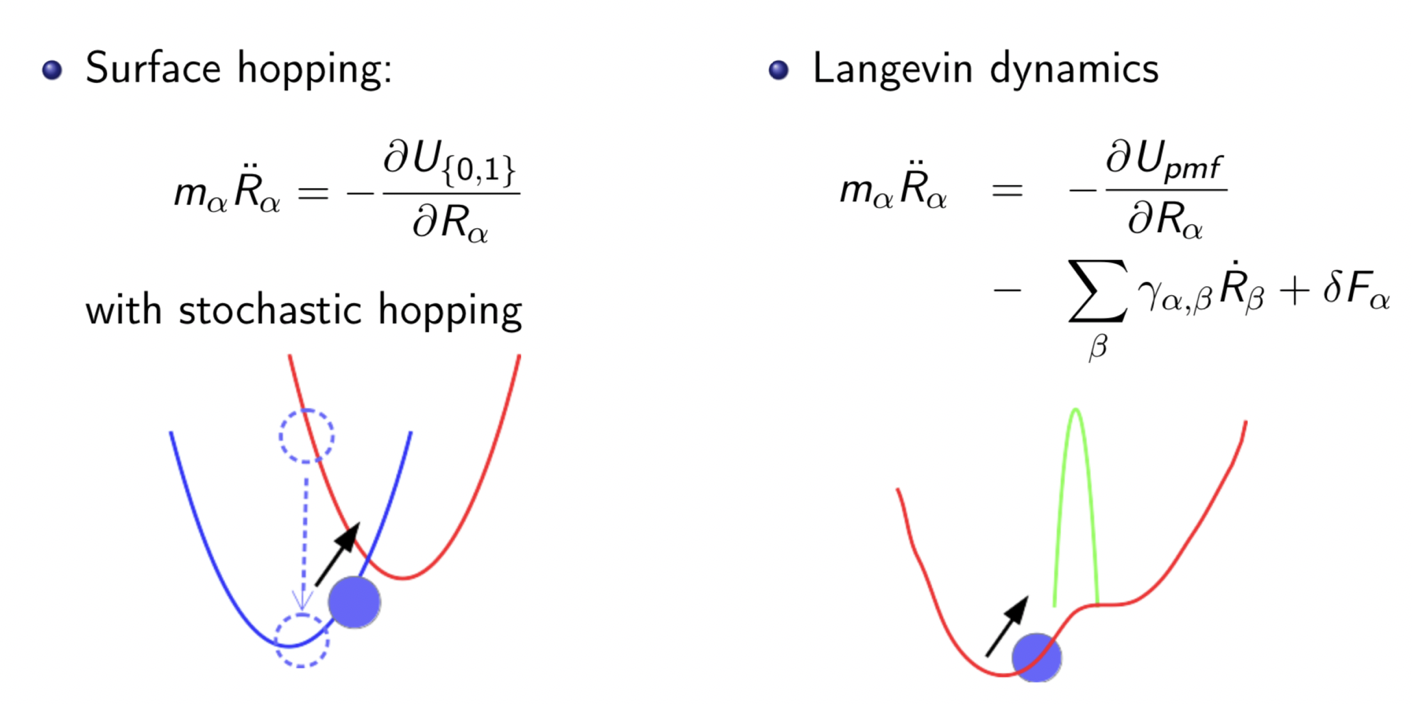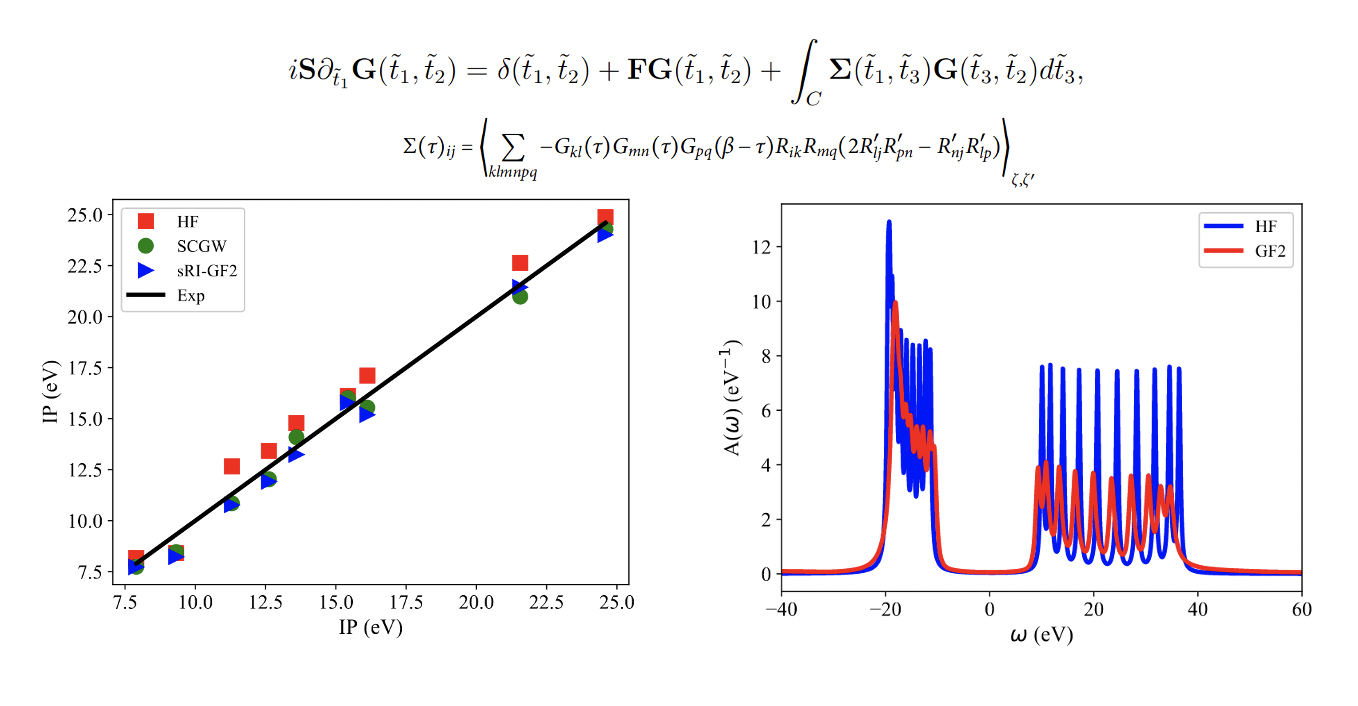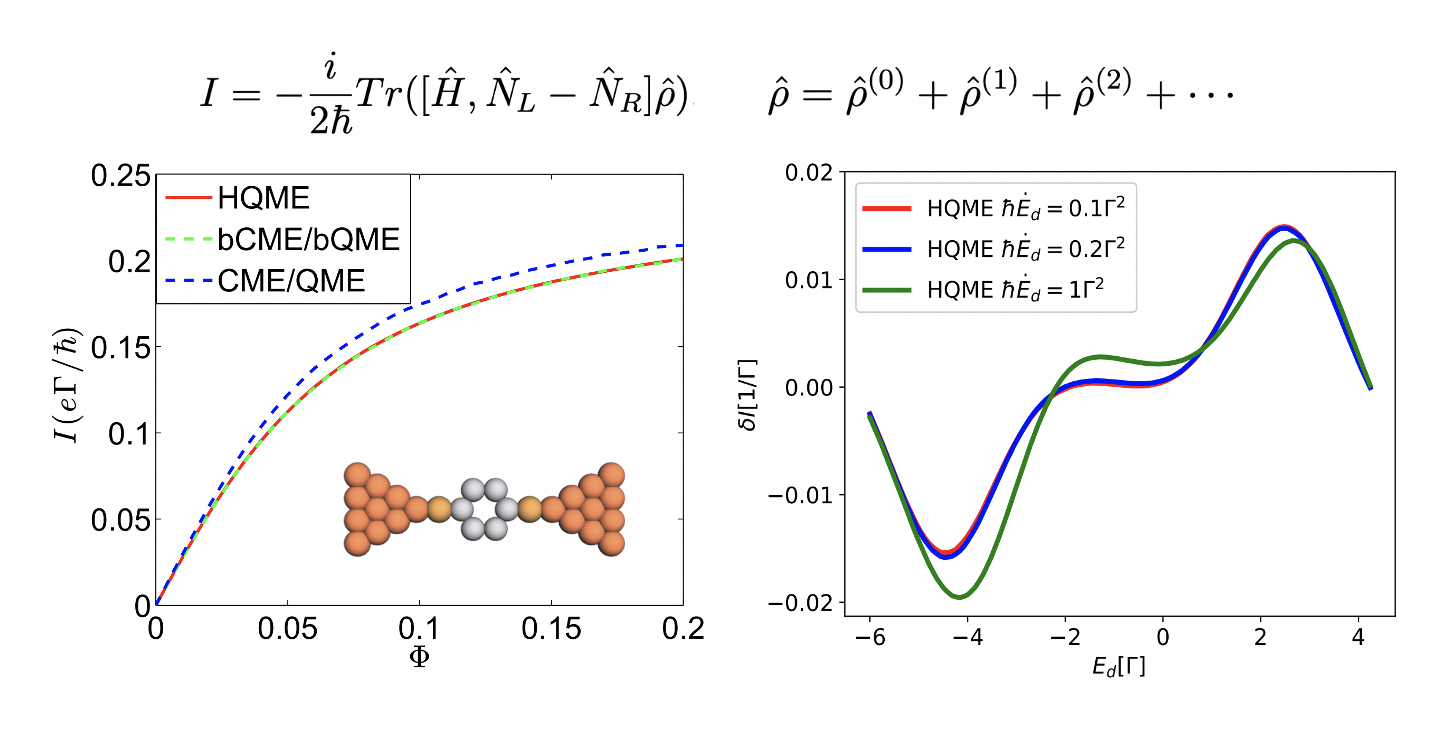Research
Our research of interests lies in theoretical/physical chemistry, with a special focus on nonadiabatic (quantum) dynamics and (excited states) electronic structure theory for molecular systems in condensed phase, at interfaces, and within nanomaterials . To be more specific,
Nonadiabatic dynamics:
We are interested in nonadiabatic dynamics in condensed phase or at interfaces, where we have developed and implemented surface hopping and electronic friction approaches to study electron and energy transfer at molecule-metal interfaces. Such studies are very relevant to many chemical systems, e.g. electrochemistry, chemisorption, nanojunctions. we have derived classical master equation and generalized Langevin equation to describe coupled electron-nuclear motion near metal surfaces. The nonadiabatic electron transfer processes at molecule-metal interfaces are either being incorporated into stochastic hopping events between different potential energy surfaces (classical master equation/surface hopping) or being incorporated into frictional effects (generalized Langevin equation/electronic friction). We have derived a general framework to calculate electronic friction both in equilibrium and out of equilibrium. When electronic correlations are included, we find that frictional coefficients exhibit Kondo features. Such a framework also provides a general treatment to quantum thermodynamics on open quantum system.

Reference:
1. W. Dou, J.E. Subotnik. “Non-Adiabatic Molecular Dynamics at Metal surfaces” J. Phys. Chem. A 124, 751(2020)
2. W. Dou, J. E. Subotnik. “Perspective: How to understand electronic friction” J. Chem. Phys. 148, 230901 (2018)
Excited-state electronic structure theory:
The group also investigates the efforts to effectively calculate the excited-state electronic structure theory for molecules and extended systems. We are developing the cutting edged tools to treat many-electron problems, with a special focus on the many-body perturbation theory and Green's functions, e.g. GW, Bethe-Salpeter equation, second-order Green's function (GF2 or MP2). In these methods, the electronic correlations are incorporated into the self-energy, which is very inefficiently to evaluate due to high computational cost. The computational scaling of such step is O(N^5) or more, which limits the application of these methods to relatively small system size (say, 100 electrons). To overcome the computational bottleneck, we have introduced the stochastic implementation of these methods, called the stochastic resolution of identity approach, which greatly reduce the computational cost down to O(N^3). As tested on molecular and extended systems (e.g. Hydrogen molecule chain) GF2 predicts quasi-particle properties better than Hartree-Fock (HF) and density functional theory (DFT), and has a similar accuracy as GW method.

Reference:
1. W. Dou, T.Y. Takeshita, M. Chen, R. Baer, D. Neuhauser, E. Rabani. “Stochastic Resolution of Identity for Real-Time Second-Order Green’s Function: Ionization Potential and Quasi-particle Spectrum” J. Chem. Theory Comput. 15, 6703 (2019)
2. T.Y. Takeshita, W. Dou, D.G.A. Smith, W.A. de Jong, R. Baer, D. Neuhauser, E. Rabani. “Stochastic resolution of identity second-order Matsubara Green’s function theory” J. Chem. Phys. 151, 044114 (2019)
Nonequilibrium quantum dynamics:
We also develop new methods to treat quantum dynamics at non-equilibrium conditions, i.e. under driving, carrying on an electron or heat current throughout the system. One of such quantum systems are nano-junctions, where a quantum dot or a molecular system coupled with two leads. We study entropy production and electron-phonon couplings throughout the transport properties, i.e. current-voltage curves, heat flows, and energy conversion. One of such method is based on response theory, where we capture non-adiabatic correction to the thermodynamic quantities with external driving, and we manifest the first and second thermodynamic law in the quantum regimes.

Reference:
1. W. Dou, C. Schinabeck, M. Thoss, J. E. Subotnik. “A broadened classical master equation approach for treating electron-nuclear coupling in non-equilibrium transport” J. Chem. Phys. 148, 102317 (2018)
2. W. Dou, J. Bätge, A. Levy, M. Thoss. “Universal approach to quantum thermodynamics of strongly coupled systems under nonequilibrium conditions and external driving” Phys. Rev. B 101, 184304 (2020)